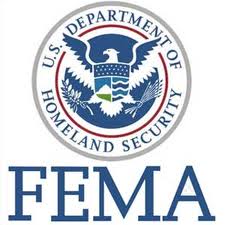
In early May, the Federal Emergency Management Association (FEMA) and its partners—state, local, tribal, and territorial governments and private and nonprofit sector organizations, including ICMA—released the National Preparedness Report (NPR), which identifies significant progress the United States has made in the areas of emergency prevention, protection, mitigation, response, and recovery. The NPR found that the nation has increased its collective preparedness, not only from external threats, but also for natural and technological hazards that face its communities.
The NPR was developed to meet the requirements of Presidential Policy Directive 8/PPD-8: National Preparedness. PPD-8 is aimed at strengthening the security and resilience of the United States through systematic preparation for the threats that pose the greatest risk to the security of the United States, including acts of terrorism, cyber attacks, pandemics, and catastrophic natural disasters.
The NPR focuses on five mission areas: prevention, protection, mitigation, response and recovery, as outlined in the National Preparedness Goal released in October 2011. Within these mission areas are 31 core capabilities central to preparedness. The NPR assesses each of these 31 core capabilities. For a quick overview of the report, read the National Preparedness Report Fact Sheet.
Overall, the NPR found the United States has made significant progress in enhancing preparedness and identifies several significant areas of national strength. For example, the United States has built the foundation for an integrated, all-hazards planning architecture that considers routine emergencies and catastrophic events. Operational coordination has also improved with the adoption of the National Incident Management System (NIMS), which provides a common doctrine for incident management. In addition, intelligence and information sharing capabilities are stronger thanks to a national network of fusion centers and Joint Terrorism Task Forces that bring together federal, state, and local law enforcement, Intelligence Community resources, and other public safety officials and private sector partners. The NPR also identified opportunities for national improvement in cybersecurity, long-term recovery, and integrating individuals with access and functional needs into preparedness activities.
“Our nation has made significant progress in strengthening our core capabilities over the last ten years. Local governments have strengthened mutual aid agreements, found ways to work across state lines, and improved communications and working relationships with the FBI and other federal partners,” Ron Carlee, ICMA chief operating officer, who served as manager of Arlington County, Virginia, during the 9-11 attacks.
“That said,” Carlee continued, “There are areas that need more attention, including cybersecurity and long-term recovery capabilities. Greater focus should be placed on how to help devastated communities over a sustained period of time so that they can restore their local economy, rebuild their homes, and help businesses get people back to work.”
FEMA developed the NPR in close coordination with leaders of federal departments and agencies, and the NPR reflects inputs from state, local, tribal, and territorial governments, private and nonprofit sector partners, and the general public. Data was also integrated from the 2011 State Preparedness Reports, which are state-wide self-assessments of the core capabilities submitted by all 56 U.S. states and territories through a standard survey. FEMA also conducted research to identify any recent, independent evaluations, surveys and other data related to the core capabilities.
The National Preparedness Report is the next step in implementing PPD-8. Since the directive was signed by the president in March 2011, FEMA and its partners have released the first edition of the National Preparedness Goal, the National Preparedness System description, and the working drafts of the National Planning Frameworks. More information on PPD-8 is available here and you can contribute your ideas here.
New, Reduced Membership Dues
A new, reduced dues rate is available for CAOs/ACAOs, along with additional discounts for those in smaller communities, has been implemented. Learn more and be sure to join or renew today!
